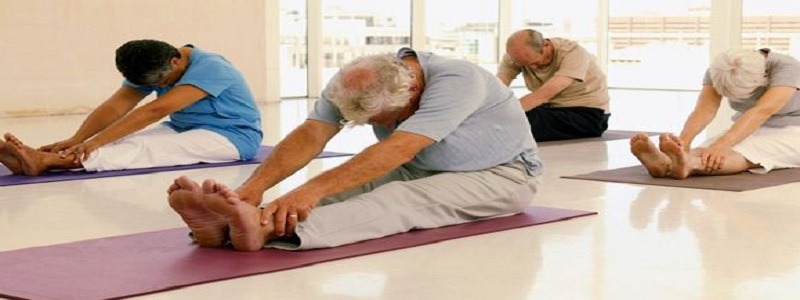Yoga for older adults

Yoga is a highly recommended discipline for older adults.
What is yoga?
Yoga is a Sanskrit word that denotes effort and union between mind, body, and spirit. It originated in what is now India over 5,000 years ago and is considered a science of life that aims to achieve mental and emotional balance and maintain physical health. It has long been established as a psychological, medical, and spiritual discipline, and today it is highly recommended for people of all ages. Older people who practise yoga can reap a wide range of physical and mental benefits thanks to its exercises.
Yoga as a way of life
The word yoga refers to a set of practices that encompass different poses, meditation, breathing, kriyas (cleanses), mudras (energy seals), kirtan (chanting), mantras, and rituals. However, yoga is also a lifestyle choice, a philosophical and psychological system aimed at overall wellbeing and peace of mind. This is why yoga is considered a discipline.
Benefits of yoga
As a whole, yoga provides many physical and mental benefits for anyone who practises it regularly. Its physical benefits include increased body energies, release of toxins, and a strengthened immune system, in addition to improved flexibility and muscular strength. In terms of mental benefits, the emphasis yoga places on breathing helps to induce a state of calmness and tranquillity, fight against depression, and combat states of rage or panic.
Yoga is suitable for people of all ages, and as a result there has been a surge in the amount of people who practise it, from children and adults to the elderly. There are many different types of yoga within the discipline, and professionals can adapt these to any and every stage of life.
Yoga for older people
The discipline is increasingly being introduced to the older population. As we get older, limited mobility and mental fatigue are inevitable, but there are always strategies for combating these ageing symptoms, including yoga. In the case of older adults, one might even say that there is a link between age and living life to its fullest.
The best yoga poses for those in their old age are based on Hatha and Tantra Yoga, as the body poses are gentle enough for their health and physical condition. Movements and postures are always tailored to individual abilities, and it is best to practise them in an open, well-ventilated space, in a very calm state of mind and prior to eating.
How often should one practise yoga?
It is very important to practice yoga regularly (every day) in order to reap its long-term benefits. Yoga’s many benefits for older adults include: increased flexibility, practising different postures that counteract an overall lack of daily movement, improved balance, which helps prevent falls, and overall mental exercise that helps prevent memory loss.
In addition, pranayamas, or breathing exercises, strengthen the respiratory system and help it transport energy and oxygen to the brain, regenerating neurons and vital organs. Breathing exercises can also improve circulation and ward off cardiovascular diseases.
Grupo Casaverde promotes a healthy lifestyle in older patients, taking into account their state of health in order to recommend exercises that will benefit them the most. Older people are therefore strongly encouraged to practise disciplines such as yoga, which provides both physical and mental benefits and thereby improves quality of life.


